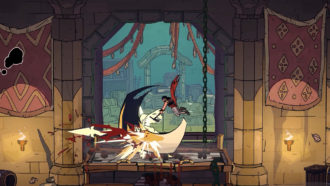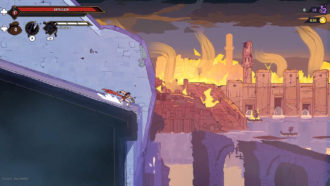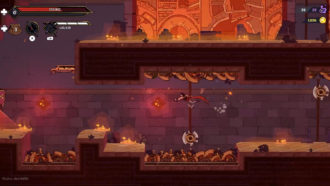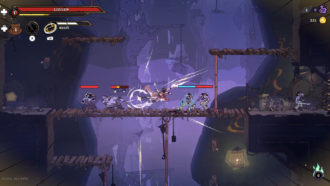Platforms:
Xbox One, PC, PS5, Xbox Series X|S
Released:
August 21, 2025
Publisher:
Ubisoft
Developer:
Evil Empire
The Prince of Persia series is in an odd place right now. Outside of remakes and mobile releases, after 2010’s The Forgotten Sands, we didn’t see a mainline Prince of Persia for fourteen years until the release of the excellent The Lost Crown in 2024. The Lost Crown itself suggested the series was looking to rediscover itself in the 2020s, with a shift away from the Prince as protagonist, alongside forgoing its 3D action platformer roots for the trappings of a Metroidvania. Despite being critically acclaimed, The Lost Crown was unsuccessful financially and saw its development team disbanded. A few months later, The Rogue Prince of Persia entered into Early Access, marking both a new turn for the series and making it the only game from the franchise currently in development besides the seemingly doomed Sands of Time remake.
All this puts a lot of undue pressure on The Rogue Prince of Persia’s surprise 1.0 launch from Early Access a year and a half later. To make matters more challenging, The Rogue Prince is a roguelite (hence the sly title); a genre I bemoaned in a recent review as risking homogeneity and oversaturation. It’s also being developed by a third-party studio, Evil Empire, which, despite a long track record as a support studio, has never released its own new title. All this suggests a massive headwind of (arguably unfair) challenges and expectations being blasted in the Rogue Prince’s direction, both from Ubiosoft themselves, I would bet, but also longtime fans of the series.
Here’s the thing, though. The game Evil Empire last spent five years supporting? Dead Cells, one of the most lauded action roguelikes of recent decades. And here’s the other thing: The Rogue Prince of Persia slaps. This is a roguelite whose presentation, combat, platforming, progression and music all come together to craft a visage that glistens like the haze on a picturesque sand dune. The Rogue Prince takes the DNA of Dead Cells and adapts it seamlessly to a presentation that both feels very Prince of Persia and also novel, eliciting a gameplay experience that turns controlling the Prince into a fluid and mobile dance of daggers and danger. Turns out my malaise over the state of roguelikes was short-lived; all I needed to do was return to an assured development of the genre to see it sing again.
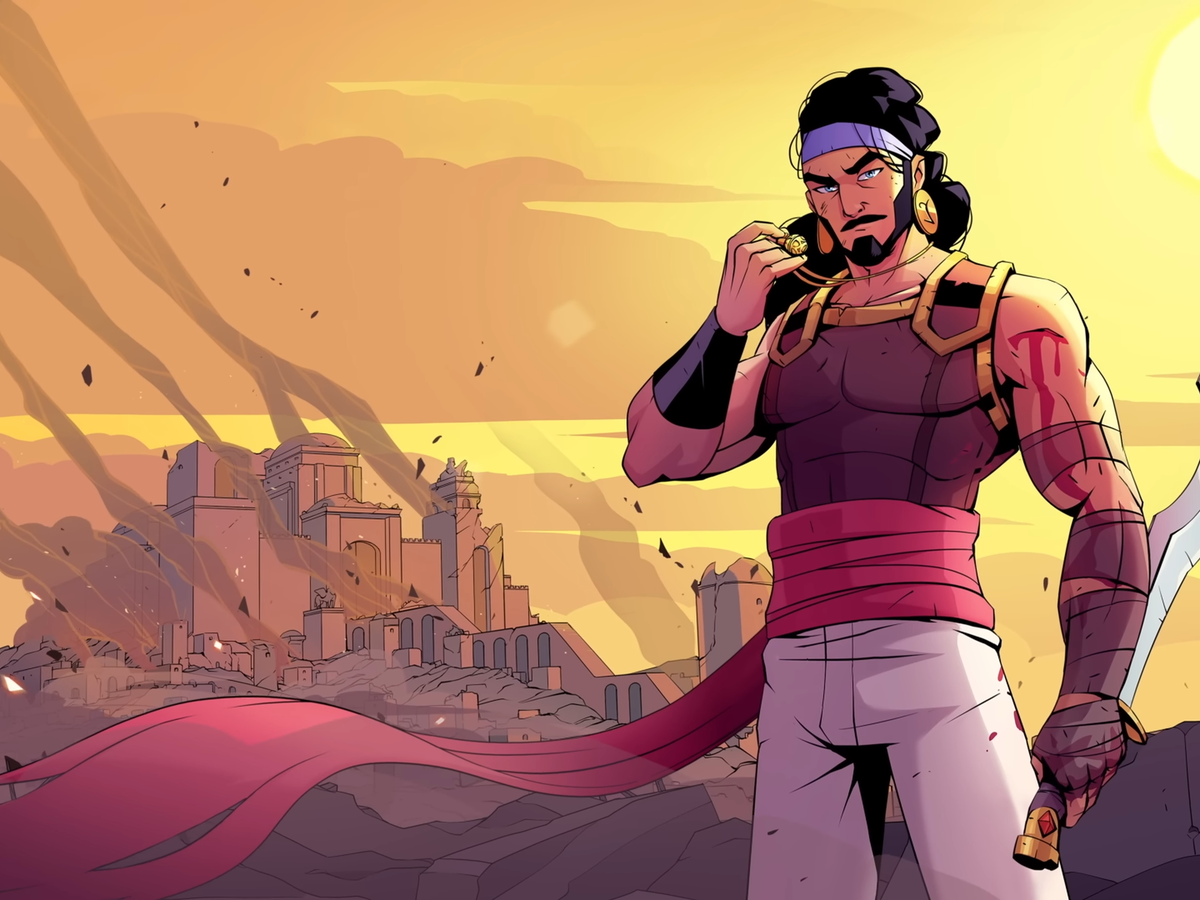
The Rogue Prince of Persia follows the titular Prince of Persia as his home city of Ctesiphon is invaded by the Huns, led by their corrupting-magic-dabbling chief Nogai, and quickly overwhelms the city while the Prince is incapacitated. The Prince, aided by an enchanted bola that awakens him wherever he last slept when he dies, must attempt an assault on the Hun-invaded city over and over to rescue the royal family and defeat Nogai.
It’s a familiar setup for a roguelike/lite, but it does speak to how this is such a natural generic fit for The Prince of Persia. Since the iconic Sands of Time, the series has frequently taken an interest in playing with time and repetition, the bread and butter of the roguelike genre. What The Rogue Prince also reveals is how apt a Dead Cell-styled roguelike in particular is, too. There is a lot of Dead Cells DNA here, unsurprisingly, and its focus on fast combat and navigation seamlessly slots into Prince of Persia’s style and expectations.
Evil Empire did not rest on its laurels, however. This is not a simple Dead Cells reskin, as the studio has also brought along the Prince of Persia’s hallmark interest in platforming. The player has at their disposal both a typical dash that allows them to vault over enemies, but also the ability to wall run on any background surface. This, alongside wall-vaulting and the dash, gives the player a robust repertoire of movement abilities that the Rogue Prince regularly challenges you to put to use. Certain levels feel more platformer than actioner, requiring you to dodge spikes, spinning blades, vault up towers and plenty more. It took me a bit of time for the controls and movement to feel intuitive, but once it did, the joy of moving through a level, seamlessly darting from one enemy and obstacle to the next, was enthralling.
Platforming also becomes integral to combat. While there is plenty of button-mashing here, many enemies also encourage you to take advantage of dashes and wall runs to circumvent and approach them effectively. Environmental kills are plentiful, and often only a dash and a kick away. The Rogue Prince, like Hi-Fi Rush and the Batman: Arkham series, also understands that some of the best action games are also secretly rhythm games (well, ok, not so secret in Hi-Fi Rush’s case). Adding in traversal, combat becomes a dance of dodge, run, stab, and dive in time to a hidden beat. Action becomes percussion. The most overt implementation of this rhythm comes from a system called Vayu’s breath. Whenever the player uses the right timing to vault from a pole, kill an enemy or jump during a wall run, they accumulate momentum that, when the bar is full, accelerates the Prince’s movement speed to the pace of a frenetic chipmunk. This system is outstanding and nearly turns the Prince into Sonic, zipping around the level from enemy to enemy in a deadly dance of slashing blades, elemental attacks and movement.
“This is not a simple Dead Cells reskin, as the studio has also brought along the Prince of Persia’s hallmark interest in platforming.”
The combat variety is also great. While there isn’t an endlessly deep roster, hours in, I was still encountering new enemy types being thrown at me in new configurations. Weapons also add plenty of variety. Like Dead Cells, you start with a small rack of weapons you can encounter each run, but new weapons are found and unlocked at a very generous pace. Each weapon has a different quick attack, special attack, and stipulation for critical hits, meaning that the nuances of utilising each weapon are more varied than they first appear, and each varies up the patterns of combat in different ways. You can also equip tools, weapons that can only be used after gaining enough energy from combat. While there is a large roster of these, too, I found the energy system led me to rely on them very little when it came to crafting my build, which meant they rarely defined my playstyle the way my main weapons and medallions did.
Indeed, its medallions are the real backbone of its build-crafting each run. Medallions are items you collect that offer passive bonuses that can range from a mundane extra 10% damage to more creative ones like launching flaming daggers whenever you perform a special attack. Like Dead Cells and earlier this year’s Monster Train 2, The Rogue Prince’s gameplay sings the loudest when you come across just the right combination of medallions and weapons; my build that helped me take down its final boss for the first time, for instance, doubled all my critical damage and kept me in a near-permanent state of boosted speed, turning the Prince into a very pointy whirlwind that dispatched enemies in seconds.
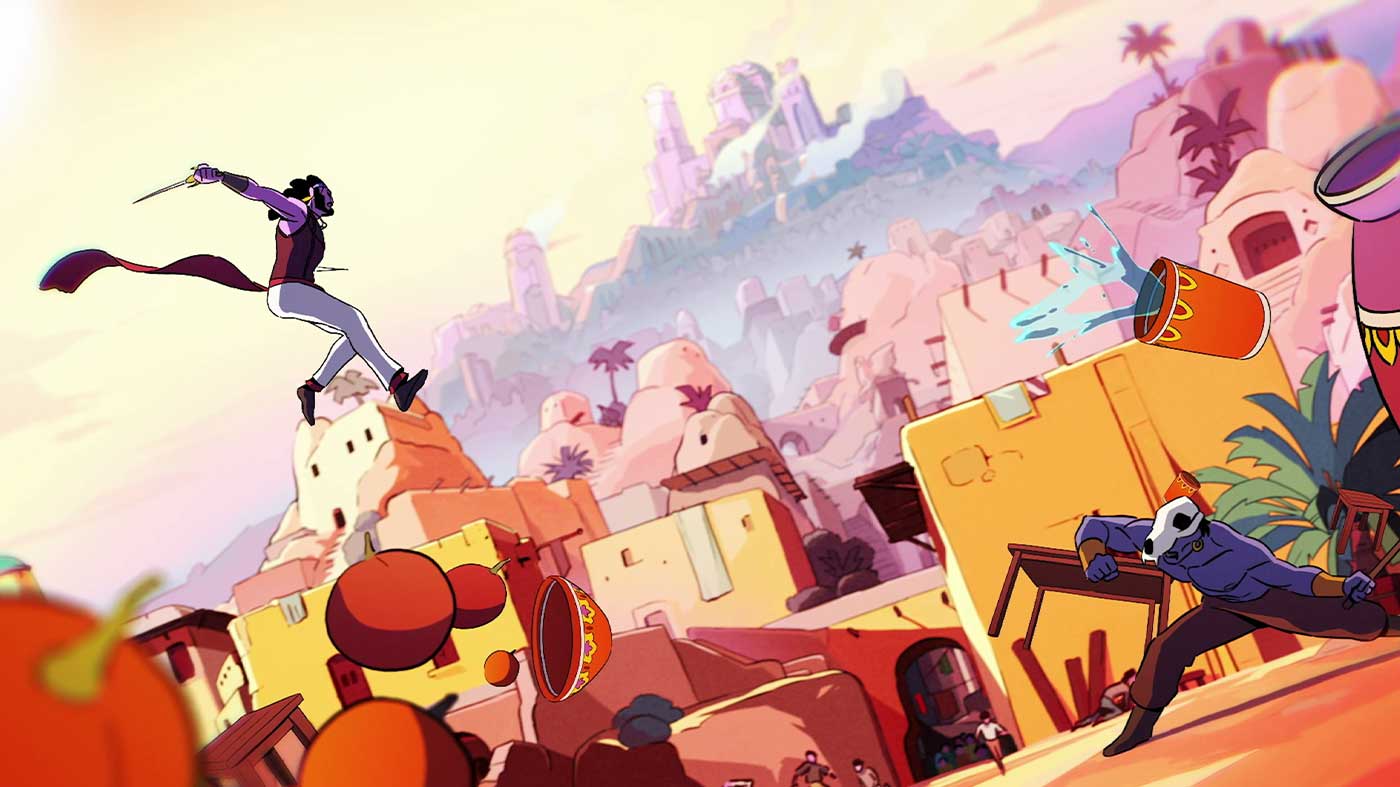
Meta-progression is also fantastically balanced and paced. This is what distinguishes the roguelikes and roguelites, and The Rogue Prince has two interlocking systems for progression: accumulating experience between runs to unlock perks in a series of skill trees, and collecting currency to unlock new weapons and medallions. The latter is great for adding more build opportunities and variety, and also gives you some control over what type of weapons are slowly added to the pool each run. The former, on the other hand, is classic roguelite and grants you more health, potions and resource accumulation options to get new tools even faster. Two perks, especially the ones that offer extra lives à la Hades, feel essential, and while they do make the game notably easier when equipped, the flexibility of The Rogue Prince’s systems and difficulty modifiers means a more assured player can still play this as a straight roguelike if they so choose.
Stylistically, The Rogue Prince is varied and stunning. It has a clean, cell-shaded look that is legible without being too cartoonish, balancing a look that oscillates between an edgy Saturday morning cartoon and a slick indie comic book, all of which adds to the overall fluidity of its design. Each of the environments the player unlocks as they progress is remarkably distinct – no two aesthetics, colour schemes or major environmental features are reused. These range from rabbit warrens of underground aqueducts, tentacled-tormented harbours and an academy styled after a very grand grandfather clock. Within each environment, there is repetition – I got used to seeing similar layouts in the same place quite quickly and was surprised there wasn’t more randomisation – but other than that, The Rogue Prince does a great job consistently orienting the player visually.
“The Rogue Prince of Persia understands that some of the best action games are also secretly rhythm games.”
And the music. Oh my god. As I said in my preview for Monster Train 2 earlier this year, music is an underappreciated part of both game-making and roguelikes in particular, and booting up The Rogue Prince, I was immediately taken aback by how distinctive and enthralling its sound is. The score is composed by Asadi, a Persian-American musician who is known for his mix of classical Persian instrumentation and electronic inspiration, making for a melding that is simultaneously so appropriate for Prince of Persia and remarkably distinct. A different track’s syncopated beat accompanies the player in each environment, offering an ideal musical complement to the percussive combat. Over the week-long review period, I had two modes – playing The Rogue Prince of Persia and listening to The Rogue Prince of Persia.
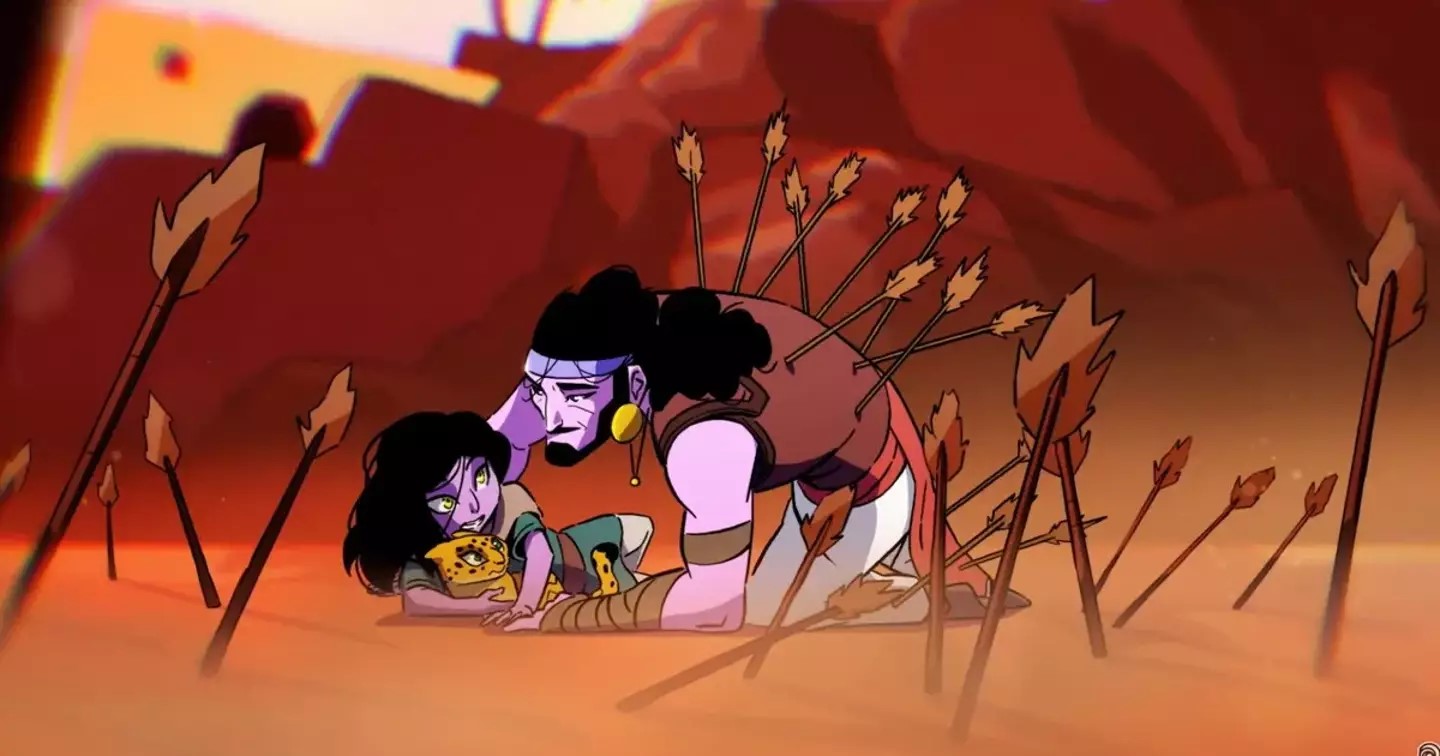
Aside from my quibbles with its tools, I think The Rogue Prince’s weakest link is its story. This is still a part of modern video games that many roguelikes that aren’t made by Supergiant struggle with, though The Rogue Prince tries harder than most. It’s far from bad; the characters you meet have lively dialogue and distinctive personalities, and a few emotional beats got the heartstrings tugging briefly, but the lack of voice acting hurts their memorability and any emotional tension between the Prince and his family is swept aside a bit too quickly for the sake of plot progression. That said, it is very well paced – the story glides along at a brisk clip, with each run unlocking a few more narrative details for me to pursue in the next, as well as unlocking new locations just as I was getting too familiar with existing ones.
It is also the rare case of a modern roguelike that actually respects the player’s time. While I did not have enough time in the review period to see absolutely everything The Rogue Prince offers (partially due to an odd mechanical moment right before its end), I beat the final boss for the first time in only nine hours; a fantastic change of pace compared to others in the genre that demand all your leisure time to fully appreciate their intricacies. For those who are afraid of ‘value for money’ time-wise (putting aside how the value of a game cannot and should not be quantified by its length), rest assured there is still plenty of replayability and things to do once the final boss has been downed for the first time that I’m sure the genre-dedicated will very much appreciate the difficulty of.
9
Amazing
Positive:
- Fantastic combination of platforming and combat
- Fluid, rhythmic action
- Robust roguelite mechanics
- Incredible score
Negative:
- Story disappoints slightly
The Rogue Prince of Persia is both a fantastic Prince of Persia game and a brilliant roguelite. Evil Empire draws on the DNA of Dead Cells to make a game that offers a compelling combination of platforming and combat, robust roguelite systems, and an understanding of the underlying rhythms of action games. It’s as enthralling to watch and listen to as it is to play.
